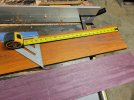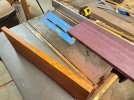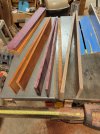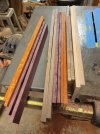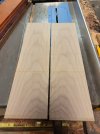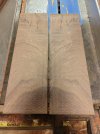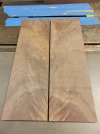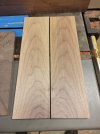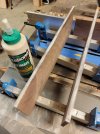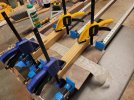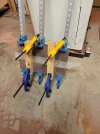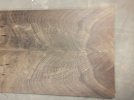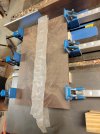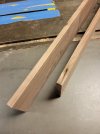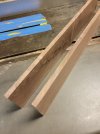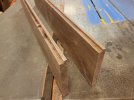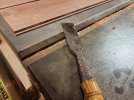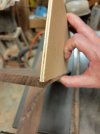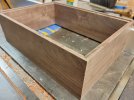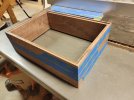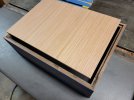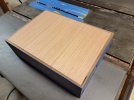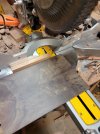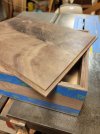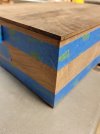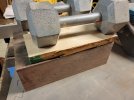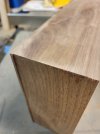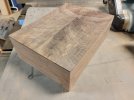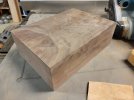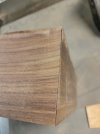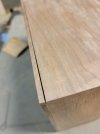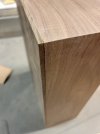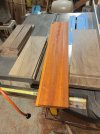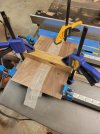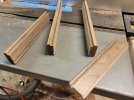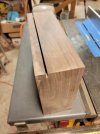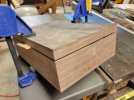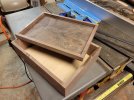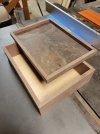So, there's been some interest in a "how to" type thread on making these little boxes I've been posting pictures of... here we go!
Example box-
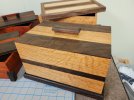
First off, I could make a plan before I start (and I recommend you do that). But I've been just cutting wood on the fly with no real dimensions to go by. I know i generally want a box with finished outer dimensions about 8"x11"x3" or 4" deep. The example above was more like 6" deep.
So... a word on wood... oak is a great one to start with. The example box above is quarter sawn oak (has a pronounced grain pattern compared to plain sawn) and walnut. I'm going to describe how i cut down 1" thick boards to make thinner wood for this box. You can definitely start with wood that's already the right thickness. I'm cheap and i have thick boards, so i cut them down. I can probably pay for the bandsaw with about 20 years of cutting down thicker boards.
Anyway, you can use cheap wood. Hell, you can use a pallet of you want. I like to use better grades of (not pine or poplar) better wood because I'm going to spend hours working on this thing and want better results.
Supplies... i like Titebond III wood glue. I hate cheap sandpaper. Usually stick to 3M garnet or other wood working grade sandpaper. I start at 120 grit usually and end with 220 grit. Sometimes 80 grit to start if there are really bad places.
Example box-

First off, I could make a plan before I start (and I recommend you do that). But I've been just cutting wood on the fly with no real dimensions to go by. I know i generally want a box with finished outer dimensions about 8"x11"x3" or 4" deep. The example above was more like 6" deep.
So... a word on wood... oak is a great one to start with. The example box above is quarter sawn oak (has a pronounced grain pattern compared to plain sawn) and walnut. I'm going to describe how i cut down 1" thick boards to make thinner wood for this box. You can definitely start with wood that's already the right thickness. I'm cheap and i have thick boards, so i cut them down. I can probably pay for the bandsaw with about 20 years of cutting down thicker boards.
Anyway, you can use cheap wood. Hell, you can use a pallet of you want. I like to use better grades of (not pine or poplar) better wood because I'm going to spend hours working on this thing and want better results.
Supplies... i like Titebond III wood glue. I hate cheap sandpaper. Usually stick to 3M garnet or other wood working grade sandpaper. I start at 120 grit usually and end with 220 grit. Sometimes 80 grit to start if there are really bad places.
Last edited:


